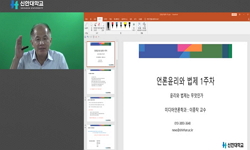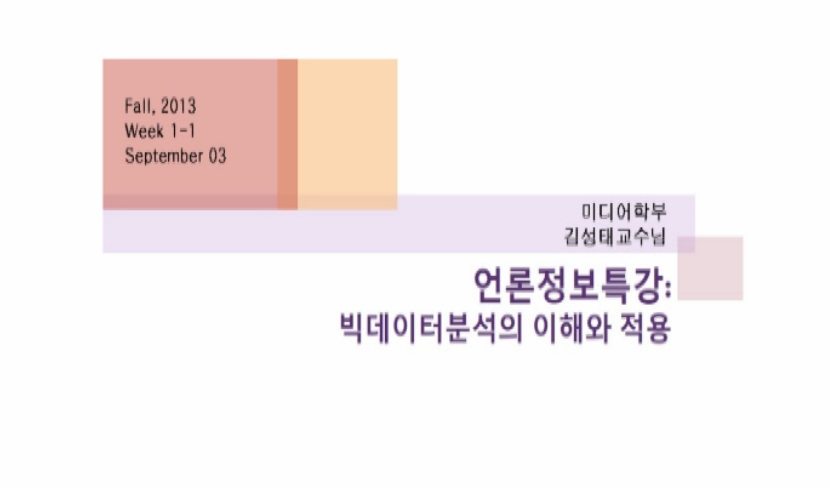There was a noticeable increase in the remonstration office' "Pi'hyeom(피혐)" actions during King Seongjong's reign. This "Pi'hyeom" practice, which could be interpreted as an act of 'Addressing charges,' refers to an action in which a governmental ...
http://chineseinput.net/에서 pinyin(병음)방식으로 중국어를 변환할 수 있습니다.
변환된 중국어를 복사하여 사용하시면 됩니다.
- 中文 을 입력하시려면 zhongwen을 입력하시고 space를누르시면됩니다.
- 北京 을 입력하시려면 beijing을 입력하시고 space를 누르시면 됩니다.

성종대 臺諫 避嫌의 증가와 그 의미 = Increase in the Remonstration officers' "Pi'hyeom" actions during King Seongjong's reign, and its Meaning
한글로보기부가정보
다국어 초록 (Multilingual Abstract)
In the reign of King Seongjong, the King and the ministers' control over the government was weakened, and the environment for more active remonstrations was being formed. Various forms of remonstrations and expostulations were established, and their activities became not only more stable but also more consistent. And in the wake of all those changes, the remonstration officers came to establish their unique "Pi'hyeom" practice as a new customary practice inside the government. By activating such practice, they were trying to provide their own remonstrations with dignity and status worthy of a 'public, impartial and just opinion("Gong'ron, 公論").'Primarily, the remonstration office' active raising of 'Pi'hyeom' was also intended to preserve their reputation as "Officers of Integrity("Cheong'mang, 淸望")," as their position was not that 'permanent(or resident)' in the government, being designated as "Irregular members of the government(‘臺諫非常員’)." And aside from ordinary Pi'hyeom instances which would normally include accusation situations or above-mentioned 'conflict of interest' issues, remonstration office would resort to Pi'hyeom actions when the remonstrations they offered were rebutted, or when they felt their dignity was damaged by such rebuttals or even opinions which were different from their own, or when a clash of an opinion occurred between colleagues or fellow remonstration office. In case an effort to hammer out a compromise would eventually fail, in usual they would request a transfer even with the king's repeated persuasion to stay. Also, when a fellow remonstration officer would file an opinion, which other remonstration officers happened to share, and summarily be punished as a result of that remonstration, the other fellow officers would take Pi'hyeom actions as sort of a 'relief aid,' and strengthened their own feeling of solidarity in the process.
With the number of Pi'hyeom instances increasing, the government became more and more conscious of such "controversy(‘Shibi, 是非’)" matters, and became keenly interested in determining what kind of standards should be abided by in the resolving of such controversies in the process of governmental operations and policy implementations. In that regard, the increase of Pi'hyeom occasions, along with other remonstration practices, enabled the Joseon society to develop a more moral political culture, based upon public and official standards.
There was a noticeable increase in the remonstration office' "Pi'hyeom(피혐)" actions during King Seongjong's reign. This "Pi'hyeom" practice, which could be interpreted as an act of 'Addressing charges,' refers to an action in which a governmental official would acknowledge the fact that a charge or accusation was filed against him, and take an 'appropriate' action such as filing a resignation or requesting a transfer, sometimes admitting their own misconducts while sometimes pleading their innocence. At the same time, there were also other ordinary situations in which a possibility of a 'conflict of interest' problem is noted, and the removal of the presence of a particular official from the situation is suggested. 'Pi'hyeom' actions were taken at those occasions as well. Examined in this article, is why there was an increase in occasions of this particular practice in the first place, and what was the political meaning of that increase.
In the reign of King Seongjong, the King and the ministers' control over the government was weakened, and the environment for more active remonstrations was being formed. Various forms of remonstrations and expostulations were established, and their activities became not only more stable but also more consistent. And in the wake of all those changes, the remonstration officers came to establish their unique "Pi'hyeom" practice as a new customary practice inside the government. By activating such practice, they were trying to provide their own remonstrations with dignity and status worthy of a 'public, impartial and just opinion("Gong'ron, 公論").'Primarily, the remonstration office' active raising of 'Pi'hyeom' was also intended to preserve their reputation as "Officers of Integrity("Cheong'mang, 淸望")," as their position was not that 'permanent(or resident)' in the government, being designated as "Irregular members of the government(‘臺諫非常員’)." And aside from ordinary Pi'hyeom instances which would normally include accusation situations or above-mentioned 'conflict of interest' issues, remonstration office would resort to Pi'hyeom actions when the remonstrations they offered were rebutted, or when they felt their dignity was damaged by such rebuttals or even opinions which were different from their own, or when a clash of an opinion occurred between colleagues or fellow remonstration office. In case an effort to hammer out a compromise would eventually fail, in usual they would request a transfer even with the king's repeated persuasion to stay. Also, when a fellow remonstration officer would file an opinion, which other remonstration officers happened to share, and summarily be punished as a result of that remonstration, the other fellow officers would take Pi'hyeom actions as sort of a 'relief aid,' and strengthened their own feeling of solidarity in the process.
With the number of Pi'hyeom instances increasing, the government became more and more conscious of such "controversy(‘Shibi, 是非’)" matters, and became keenly interested in determining what kind of standards should be abided by in the resolving of such controversies in the process of governmental operations and policy implementations. In that regard, the increase of Pi'hyeom occasions, along with other remonstration practices, enabled the Joseon society to develop a more moral political culture, based upon public and official standards.
국문 초록 (Abstract)
대간의 적극적인 피혐 활동은 기본적으로 ‘臺諫非常員’의 입장에서 대간으로서의 淸望을 지키고자 하는 노력 가운데 이루어지고 있었다. 즉 대간의 피혐은 ‘자신에 대한 혐의 제기’ㆍ‘상피 사례 발생’과 같은 일반적인 피혐 외에도, 대간에서 제기한 간쟁이 논박을 받거나 자신들과 다른 입장이 표명되어 체모에 손상을 입었다고 판단될 경우, 동료들과 의견 충돌이 발생할 경우에도 피혐을 요청하고 있었다. 또한 동료들과의 의견 조율이 실패하여 제기된 피혐에 대해서는 국왕의 만류에도 불구하고 끝까지 체직되기를 희망하였으며, 동료들 가운데 같은 의견을 제기하다가 처벌을 받게 되는 경우에도 그들을 구호하기 위해 피혐을 제기하여 연대의식을 고취시키고 있었다.
대간의 피혐이 증가함에 따라 조정에서는 국정 운영과 정책 집행에 있어서 시비 문제에 그만큼 민감해지면서 무엇에 근거해서 시비가 결정되어야 하는지에 대해서 더 많은 관심을 기울이게 되었다. 그런 의미에서 대간 피혐의 증대는 다른 언론관행들과 더불어 조선의 국정 운영이 公的인 기준에 입각한 도덕적 정치문화를 구축하는데 일조하는 것이었다고 할 수 있다.
본고는 조선 성종대 대간의 피혐이 크게 증가하는 현상에 주목하여, 피혐 증가의 맥락과 그것이 가지고 있는 정치적 의미에 대해 검토한 논문이다. 성종대는 국왕과 재상들의 국정 운영에 ...
본고는 조선 성종대 대간의 피혐이 크게 증가하는 현상에 주목하여, 피혐 증가의 맥락과 그것이 가지고 있는 정치적 의미에 대해 검토한 논문이다. 성종대는 국왕과 재상들의 국정 운영에 대한 독점력이 약화되는 가운데 언론이 활성화 될 수 있는 기본적인 여건이 조성되고 있었고, 그와 더불어 다양한 언론관행들이 정착되어 대간의 언론은 안정적으로 제기될 수 있었다. 이러한 상황에서 대간은 자신들만의 독특한 피혐 방식을 또 하나의 관행으로 정착시키며 자신들이 제기하는 언론이 公論으로서의 위상을 확보할 수 있도록 노력하고 있었다.
대간의 적극적인 피혐 활동은 기본적으로 ‘臺諫非常員’의 입장에서 대간으로서의 淸望을 지키고자 하는 노력 가운데 이루어지고 있었다. 즉 대간의 피혐은 ‘자신에 대한 혐의 제기’ㆍ‘상피 사례 발생’과 같은 일반적인 피혐 외에도, 대간에서 제기한 간쟁이 논박을 받거나 자신들과 다른 입장이 표명되어 체모에 손상을 입었다고 판단될 경우, 동료들과 의견 충돌이 발생할 경우에도 피혐을 요청하고 있었다. 또한 동료들과의 의견 조율이 실패하여 제기된 피혐에 대해서는 국왕의 만류에도 불구하고 끝까지 체직되기를 희망하였으며, 동료들 가운데 같은 의견을 제기하다가 처벌을 받게 되는 경우에도 그들을 구호하기 위해 피혐을 제기하여 연대의식을 고취시키고 있었다.
대간의 피혐이 증가함에 따라 조정에서는 국정 운영과 정책 집행에 있어서 시비 문제에 그만큼 민감해지면서 무엇에 근거해서 시비가 결정되어야 하는지에 대해서 더 많은 관심을 기울이게 되었다. 그런 의미에서 대간 피혐의 증대는 다른 언론관행들과 더불어 조선의 국정 운영이 公的인 기준에 입각한 도덕적 정치문화를 구축하는데 일조하는 것이었다고 할 수 있다.
참고문헌 (Reference)
1 구덕회, "주요 정치기구의 성격과 위상, In 조선중기 정치와 정책-인조~현종 시기" 아카넷 2003
2 김범, "조선전기의 왕권과 정국운영 : 성종·연산군·중종대를 중심으로" 고려대학교 대학원 2005
3 김지영, "조선시대 嗣位儀禮에 대한 연구" 조선시대사학회 61 (61): 5-41, 2012
4 송웅섭, "조선 성종대 전반 언론의 동향과 언론 관행의 형성 - 성종대 언론 발달의 요인과 관련하여 -" 규장각한국학연구원 (50) : 27-55, 2010
5 송웅섭, "조선 성종대 공론정치의 형성" 서울대학교 대학원 2011
6 이병휴, "사림세력의 진출과 사화" 국사편찬위원회 28 : 1996
7 송웅섭, "김종직 문인 그룹 형성 무대로서의 ‘서울’" 서울학연구소 (31) : 47-100, 2008
8 "遲川先生集"
9 "迂書"
10 "浮休子談論"
1 구덕회, "주요 정치기구의 성격과 위상, In 조선중기 정치와 정책-인조~현종 시기" 아카넷 2003
2 김범, "조선전기의 왕권과 정국운영 : 성종·연산군·중종대를 중심으로" 고려대학교 대학원 2005
3 김지영, "조선시대 嗣位儀禮에 대한 연구" 조선시대사학회 61 (61): 5-41, 2012
4 송웅섭, "조선 성종대 전반 언론의 동향과 언론 관행의 형성 - 성종대 언론 발달의 요인과 관련하여 -" 규장각한국학연구원 (50) : 27-55, 2010
5 송웅섭, "조선 성종대 공론정치의 형성" 서울대학교 대학원 2011
6 이병휴, "사림세력의 진출과 사화" 국사편찬위원회 28 : 1996
7 송웅섭, "김종직 문인 그룹 형성 무대로서의 ‘서울’" 서울학연구소 (31) : 47-100, 2008
8 "遲川先生集"
9 "迂書"
10 "浮休子談論"
11 "朝鮮王朝實錄"
12 정만조, "朝鮮時代의 士林政治-文人政權의 한 類型, In 反亂인가? 革命인가?" 새미 2008
13 崔異敦, "朝鮮中期 士林政治構造硏究" 一潮閣 1994
14 남지대, "朝鮮 成宗代의 臺諫 言論" 12 : 1985
15 정두희, "朝鮮 成宗代 臺諫의 風聞彈劾에 관한 政治的 論爭, In 宋俊浩敎授停年紀念論叢" 송준호교수정년기념논총간행위원회 1987
16 최승희, "成宗期의 國政運營體制와 王權" 10 : 2001
17 "慵齋叢話"
18 최승희, "世祖代 國政運營體制" 5 : 1998
동일학술지(권/호) 다른 논문
-
- 조선시대사학회
- 한희숙
- 2012
- KCI등재
-
- 조선시대사학회
- 한정수
- 2012
- KCI등재
-
16세기 對明 私貿易의 정책 방향과 굴레 - 中宗代 明의 ‘조선사행단 출입제한 조치’를 중심으로 -
- 조선시대사학회
- 구도영
- 2012
- KCI등재
-
- 조선시대사학회
- 이상규
- 2012
- KCI등재
분석정보
인용정보 인용지수 설명보기
학술지 이력
| 연월일 | 이력구분 | 이력상세 | 등재구분 |
|---|---|---|---|
| 2027 | 평가예정 | 재인증평가 신청대상 (재인증) | |
| 2021-01-01 | 평가 | 등재학술지 유지 (재인증) |  |
| 2018-01-01 | 평가 | 등재학술지 유지 (등재유지) |  |
| 2015-01-01 | 평가 | 등재학술지 유지 (등재유지) |  |
| 2011-01-01 | 평가 | 등재학술지 유지 (등재유지) |  |
| 2009-01-01 | 평가 | 등재학술지 유지 (등재유지) |  |
| 2007-01-01 | 평가 | 등재학술지 유지 (등재유지) |  |
| 2004-01-01 | 평가 | 등재학술지 선정 (등재후보2차) |  |
| 2003-01-01 | 평가 | 등재후보 1차 PASS (등재후보1차) |  |
| 2002-01-01 | 평가 | 등재후보학술지 유지 (등재후보1차) |  |
| 1999-01-01 | 평가 | 등재후보학술지 선정 (신규평가) |  |
학술지 인용정보
| 기준연도 | WOS-KCI 통합IF(2년) | KCIF(2년) | KCIF(3년) |
|---|---|---|---|
| 2016 | 0.87 | 0.87 | 0.96 |
| KCIF(4년) | KCIF(5년) | 중심성지수(3년) | 즉시성지수 |
| 0.97 | 0.98 | 2.253 | 0.44 |




 KISS
KISS







